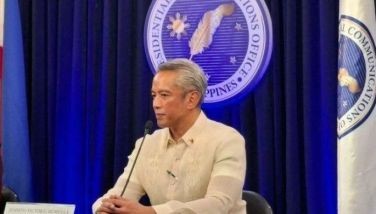A blueprint for building the nation

Ferdinand Marcos Jr. promised many things – from bringing the price of rice to P20 per kilo from nearly P40 at present, to unifying our deeply divided nation of 110 million to move our country forward.
“Sama-sama tayong babangon muli” kept playing in the ears of more than 30 million Filipinos, as if inflicted with a last song syndrome.
How and when the president-elect will do this isn’t clear yet. Will his aging technocrats be able to deliver? Will his incoming social welfare and development secretary, a media personality with no experience in community work be able to help respond to the needs of the impoverished? Will his incoming energy secretary – still unnamed as of this writing – be able to work together with stakeholders to avert a looming power shortage? Will newly elected lawmakers – including ex-convicts, alleged plunderers and election cheaters – be able to advance a legislative agenda that will help the country move forward?
Only time will tell, but for the sake of the country, I fervently hope the next six years will put us in a better place – all of us – and not just a powerful few.
The incoming administration, for sure, will need all the help it can get. Six years may not be enough to see major progress, but I hope the government will be able to build a foundation for a better Philippines.
The UP Diliman Task Force Nation-Building is offering its blueprint for building the nation, a governance agenda crafted from August 2021 to April 2022.
There are many good recommendations which I hope to tackle more in succeeding columns. It covers eight policy areas: (i) economic recovery and transformation, (ii) national social protection floor, (iii) higher education, (iv) industrial policy, (v) public transportation, (vi) local governance, (vii) electoral and political reforms, and (viii) strategic foreign policy.
For now, here are some of its notable points:
Poverty remains entrenched, despite more than a decade of rapid growth. Worse, the anti-poverty momentum may have shifted. In a Social Weather Stations (SWS) survey conducted in June 2021, 48 percent of Filipino families reported that they were poor.
The proportion of Filipinos whose income was not sufficient to meet their basic needs increased from 21.1 percent in 2018 to 23.7 percent in 2021. The 2021 figure translates into 26.14 million Filipinos living below the poverty line.
Investing in people
For the country to stimulate its economy and offset the lost economic opportunities, there is a need to have (1) institutional reforms, (2) strong social protection, and (3) strategic industry investments.
According to the Gini Coefficient, a measure of inequality in a country, the Philippines has the worst recorded inequality among the ASEAN 5.
While it is important to invest in the economy to attract foreign investment and in infrastructure, it is critical to invest in people. Social protection programs must be accessible, equitable, comprehensive, fair, and not limited to food packs and subsidies.
Social programs should continue to address income inequality and poverty in order to improve human capital in the country, which will eventually improve economic growth.
Investing in specific industries that have significant multiplier effects on the economy and are resilient from economic shocks like the pandemic, as well as in sectors that the country has natural advantages in terms of human capital, infrastructure, etc. will contribute largely to the Philippine economy.
Blue economy
These would include the Information Technology-Business Process Outsourcing (IT-BPO), maritime, and the blue economy industries.
Trade liberalization
Trade and investment liberalization should be explored in relation to strengthening, rather than displacing domestic economic actors, notably, the country’s micro, small, and medium enterprises (MSMEs).
Strengthen the performance and trade facilitation of MSMEs by providing necessary support to minimize the cost of production and acquisition of capital, research and development for relevant production technologies, and efficient logistical infrastructure for exports.
Institutional reforms
Prioritize institutional reforms, particularly those aimed at raising the quality of governance and rule of law, promoting government accountability and transparency, and improving the management of the country’s resources.
Build Build Build
Tweak the Build Build Build (BBB) program to support COVID-climate-proofing of local industries and ensure that public-private partnerships (PPP) include more sectors and stakeholders. Provide a re-entry mechanism for the affected industries of the trade liberalization and of expiring regional and international trade agreements. Strengthen social protection of vulnerable groups and improve the delivery of social services toward reducing poverty and inequality and improving community resilience against the pandemic, disasters, and economic shocks.
The Philippines today is at a crossroads. As I said, the government needs all the help it can get.
Some of the recommendations from this blueprint will certainly help, but political will, competence and sincerity to implement reforms will be key. Perhaps, only then will campaign slogans, battlecries, or that last song playing in people’s ears become a reality.
Iris Gonzales’ email address is eyesgonzales@gmail.com. Follow her on Twitter @eyesgonzales. Column archives at eyesgonzales.com
- Latest
- Trending



























